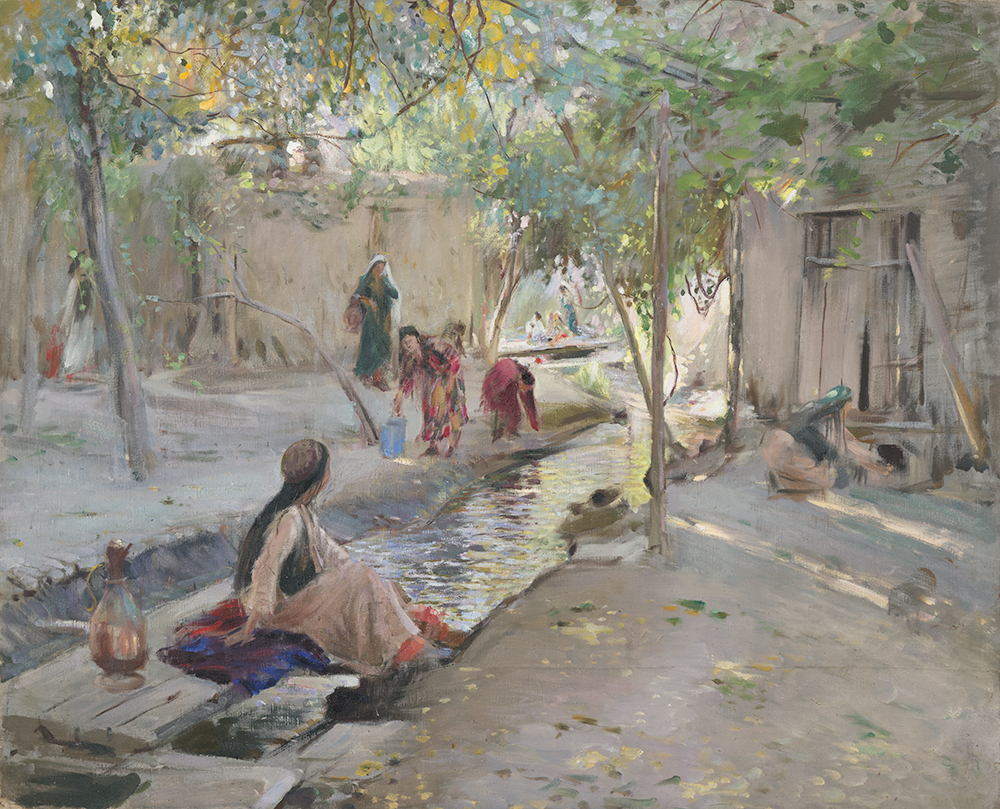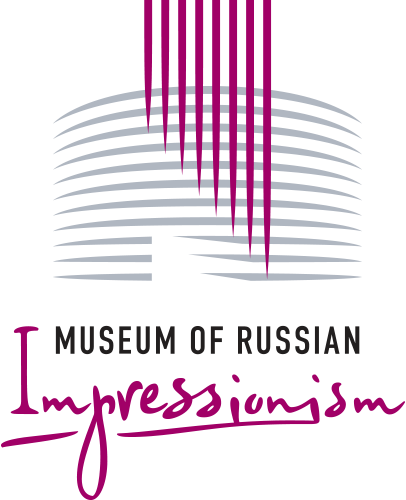
Near Aryk (Small Aqueduct), 1947
Pavel Benkov
Oil on canvas
128X158
The State Tretyakov Gallery
In the harsh days of the war, Benkov, who was already over 60, continued to actively paint. Through the state of nature, people’s moods, and changes made by the war in the usual everyday life of the city, the artist expressed his emotional agitation, responding to current events. The artist said: “I want to make the landscape serve the war, to help the fight against the fascists with the landscape.”
In the last years of the war, Benkov’s health deteriorated sharply, he seldom went into the city, but he still worked a considerable amount, using all the available space and time that his illness allowed.
Benkov’s genre paintings, created during and after the war, tell of how simple people lived in those years. In this period, Benkov rarely turns to multi-figured compositions, increasingly showing a group of two or three people depicted in their usual conditions: in picturesque courtyards, near reservoirs and wells.
In canvases like “At the Aryk”, Benkov manages to express the harmony of the relationship between man and nature with great poetry. He conveys a sense of the beauty and happiness of a peaceful life that filled the Soviet people after the end of the war. In the picture, young Uzbek women are gathered at the aryk (canal) in a lively manner, filling the vessels they have brought with them with water. The artist vividly conveys the movements and postures of the women and their immediacy in this work.



